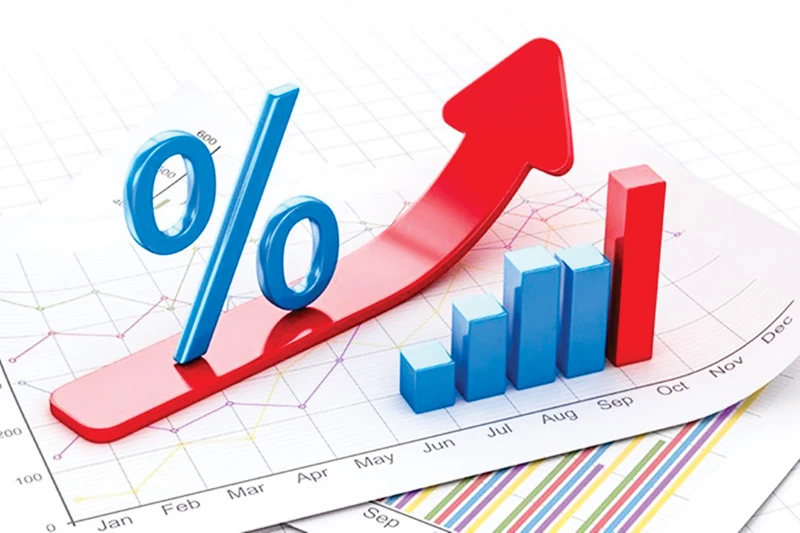
st rates, so as to support businesses and promote growth. However, lowering of interest rates does not come with standard reduction, so businesses cannot borrow, which means businesses are not supported.
Currently, many enterprises are facing difficulties in accessing capital, so it does not make any sense to reduce interest rates even further.
Stimulating credit demand
Any increase or decrease in interest rates certainly affects the economy of a country. Therefore, each country must implement monetary policies through Central Banks to adjust loan interest rates and thereby stabilize the economy. If high lending rates cause consumer and investment demand to decrease, the Central Banks are in a position to introduce policies to reduce operating interest rates, whereby lending interest rate can be adjusted and loans can then increase.
This solution is being applied by the State Bank of Vietnam to stimulate credit demand and support the economy in the current Covid-19 scenario where businesses have been battered and the economy is reeling. On 1 October, the State Bank of Vietnam adjusted the refinancing and rediscounting rates for the third time this year, along with interest rates such as deposit rates for less than six months, and interest rates in five priority areas.
Few people expected the State Bank of Vietnam to adjust interest rates three times this year. The reason is that most businesses in Vietnam are operating on loans, and if the State Bank wants to invest it has to borrow bonds, and enterprises that want to invest must borrow from banks. Commercial banks provide short, medium and long-term loans, therefore, the supply and demand of credit largely depends on what commercial banks have to offer, although the mobilized capital interest rate of banks is not cheap.
The only way to reduce interest rates is if the State Bank loosens the monetary policy, increases rediscount, and thereby increases lending. However, the monetary policy of our country is implemented with multiple objectives, paying much attention to inflation, stabilizing the exchange rate, and keeping the difference at a reasonable level to attract people to deposit savings in Vietnamese currency.
For many years, the State Bank of Vietnam has been operating on monetary policies quite carefully. In previous years, following a Government request to reduce interest rates to ensure credit support for businesses, the State Bank mainly adjusted credit growth and money supply to affect interest rates, but avoided any effect on inflation and exchange rates. By the middle of September 2019, with many uncertainties in the world economy, many central banks in the world sharply reduced interest rates but Vietnam was able to keep inflation low.
The State Bank has reduced operating rates after more than two years of stability. This year, the State Bank adjusted three times, with total reduction upto 2%, because under the present Covid-19 scenario credit growth is very low. Reducing the operating interest rate in order to facilitate cheap capital for commercial banks and thereby reducing lending interest rates, increasing credit growth, and supporting economic growth was done at the behest of the Government.
Enterprises cannot access loans
In a recently released newsletter, the Bao Viet Securities Joint Stock Company (BVSC) said that as of early October, the State Bank of Vietnam showed three consecutive months of no net pumping or withdrawal in the open market, and it is likely not to interfere in open market operations in coming time. The overnight interbank interest rate continually remained low at only 0.11% per year for the last three weeks. According to statistics of the Fiin Group, the deposit interest rates continued a downward trend in September for both six-month and twelve-month terms in all banks, due to abundant liquidity in the banking system. This means that banks will not generate more demand for loans from the State Bank. Therefore, the lowering of operating interest rate by the State Bank of Vietnam will not have much impact on the interest rates but only reflect the efforts to support the economy and boost GDP growth in the last quarter of the year.
Commercial banks are also businesses looking to make profits and they only support businesses with resources, so lending must be carefully calculated. The loan interest rate cannot be reduced sharply because the capital flow mobilized in the previous period with high interest rate will still remain. Banks have to maintain a balance, and where there are groups of customers that will receive low interest rate support, some other groups will still have to bear high interest rates. At the same time, policies to support businesses are all conditional policies and interest rate reductions only apply to new loans.
When the Government asked the State Bank to lower interest rates and boost credit, the State Bank continued to lower the executive interest rates but said it would not lower the credit standard to avoid going into a trail of bad debts as before. Commercial banks strictly comply with this regulation and therefore many enterprises cannot access loans.
According to a report by the Ho Chi Minh City Union of Business Associations (HUBA), although bank policies to support enterprises have made great strides, banks still focus mainly on traditional customers they have known for a long time, and the number of new customers are still very few. Enterprises reflect unfavorable lending conditions and procedures. They want banks to relax conditions, simplify procedures, increase access to unsecured loans through appraisal of business plans, and improve accessibility for customers. Banks can hardly meet this requirement, especially when the current bad debts of credit institutions are still controlled at about 2%, and there are many potential risks in the future.




















